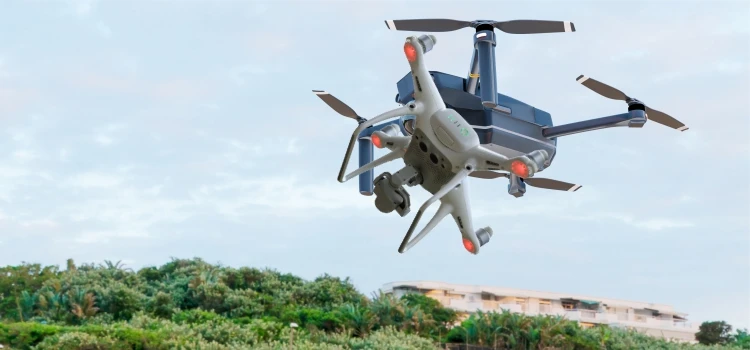A drone refers to a flying robot, also known as an unmanned aerial vehicle (UAV), which can be remotely controlled using software. Drones also function through the use of sensors or onboard GPS.
Drones have become popular for photography, as they help create aerial views. Owing to the increased use of drones, there is an increase in accidents.
Common accidents with drones may include the following-
- Collisions: Drones can collide with objects such as trees, buildings, or other drones, leading to crashes.
- Flyaways: Sometimes, drones can fly out of control and away from the drone operator due to GPS malfunctions or signal interference.
- Loss of power: If a drone’s battery runs out or malfunctions in the middle of a flight, it can result in a drone accident.
- Loss of control: The operator can lose control of the drone due to a malfunction, operator error, or signal interference, resulting in a crash.
- Flyovers of restricted airspace: If a drone flies over restricted airspace, such as airports or military bases, it can cause safety hazards and lead to accidents.
- Human error: Accidents can happen when the operator does not follow rules and regulations, such as flying too close to people or property or flying above the legal altitude limit.
Various factors can cause drone accidents and damage the drone, property, or people. To minimize the risk of accidents, it’s essential to operate drones safely, follow all regulations, and use appropriate protective gear.
An experienced lawyer can help you pursue compensation if you sustain injuries in an accident caused by someone else’s negligent operation of a drone.

What Causes A Drone To Crash?
Drone crashes are common, as more than 1.7 million drones will be registered in the United States by 2022. Several reasons may cause the drone to crash, such as poor weather conditions, inability to see a drone while flying, pilot error, skipping pre-flight check procedures, and disconnected transmission.
What Are Common Drone Injuries?
Apart from lacerations and abrasions to the upper part of the body, especially the head and face, common drone accident injuries may include:
- Cuts and bruises: These can occur from the sharp edges of the drone or its propellers, which can spin at high speeds.
- Eye injuries: Flying drones can lead to eye injuries that can include corneal abrasions or blindness in extreme cases.
- Burns: Drones powered by lithium-ion batteries can overheat and erupt in flames or cause burns. Burns are one of the most severe drone injuries during drone crashes.
- Collisions: Drones can collide with people or objects, causing blunt force trauma, broken bones, or head injuries when drone operators lose focus or control.
- Psychological trauma: Any physical injury arising from the negligence of others, being struck by a negligently operated drone, can cause emotional distress or post-traumatic stress disorder (PTSD).
If you or a loved one have suffered injury in a drone accident, you can seek counsel from a personal injury lawyer. An attorney can advise you on the best way to seek compensation for medical bills and other expenses.
Regulation of Drones
14 CFR Part 107 regulates the use of small unmanned aircraft systems (UAS) or drones that weigh less than 55 pounds. Some of the primary regulations include:
- Registration: All drones weighing more than 0.55 pounds must be registered with the FAA before being flown.
- Flight restrictions: Drones cannot be flown over 400 feet above ground level, near airports or other restricted airspace, or in crowded or busy areas.
- Remote pilot certification: Individuals operating drones must obtain a remote pilot certificate from the FAA.
- Anti-collision lighting: Drones flown during twilight or nighttime must have anti-collision lighting visible from three miles away.
- No-fly zones: There are specific no-fly zones where drones are not allowed, such as stadiums, prisons, and certain government buildings.
- Visual line of sight: Drones must be flown within the pilot’s visual line of sight, meaning that the pilot must be able to see the drone at all times.
Need Legal Help? Contact Khattar Law, PC
Any aviation lawsuit, even for unmanned drones, can be highly complex and involve unique laws and legal issues. Under such circumstances, pursuing compensation can be challenging, and you should consider seeking dedicated legal advice.
Schedule a free case evaluation by calling 210-972-3834 to learn more about your case or fill out our contact form online.